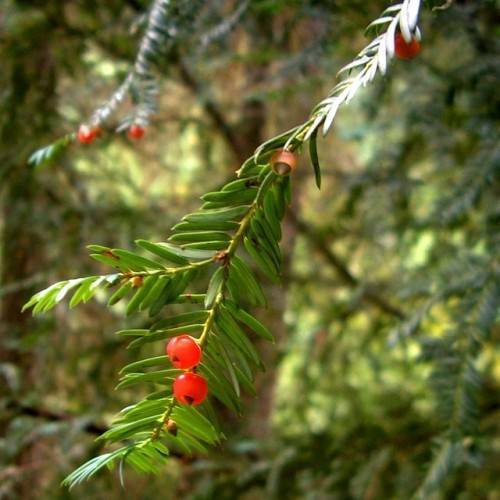
Pacific yew
Taxus brevifolia
Also Known As - western yewCycle:
Perennial
Watering:
Average
Hardiness Zone:
6
Flowers:
Flowers In Spring
Sun:
Deep shade, Filtered shade, Full sun, Part sun/part shade
Soil:
Well-drained
Fruits:
Fruits In Autumn Ready In Fall
Leaf:
Yes
Growth Rate:
Low
Poisonous To Humans:
Yes
Poisonous To Pets:
Yes
Drought Tolerant:
Yes
Thorny:
Yes
Care Level:
Medium
watering
The Pacific yew needs moderate amounts of water about once per week. Be sure to water the plant deeply, so that the soil is moist to a depth of 8-10 inches. Allow the soil to dry out slightly between waterings but never allow it to become bone dry. When it rains, reduce the amount of watering accordingly. The Pacific yew can handle some drought conditions, but it needs adequate water for optimal health and growth. Ensure the soil is evenly moist but not soggy.
sunlight
The Pacific yew (Taxus brevifolia) grows in a variety of habitats, mostly in coniferous forests across western North America from southern British Columbia to northern Mexico. It requires full sun or partial shade for optimal growth. In northern areas, the Pacific yew will need full sunlight for several hours each day for proper growth and development. In central and southern regions, however, Pacific yew may only need partial shade to protect it from the effects of extreme heat and dry conditions. In general, Pacific yew trees should get at least 6-8 hours of sunlight each day during the spring, summer, and fall months. In winter, many of the areas where the Pacific yew grows experience bright, but short days, making it possible for the trees to receive enough light to stay healthy despite the season's shorter days.
pruning
Pruning is essential to keep the Pacific yew (Taxus brevifolia) in shape, and should be done twice a year—once in late winter or early spring and again in late summer, when the growth period has slowed. To prune, first determine the size and shape you would like your yew, then carefully prune excess branches and stems to achieve the desired shape or size. For Pacific yews, the best time to prune is in winter or early spring as the dormant buds are coming alive and ready to rapidly grow. Its important to prune any drooping branches to maintain the desired structure of your yew. Pruning the outer growth also allows for more light to reach the lower parts of your plant, encouraging even growth. Trimming branches that grow too close together can also be beneficial to maintain a healthy shape and to prevent any potential diseases.
